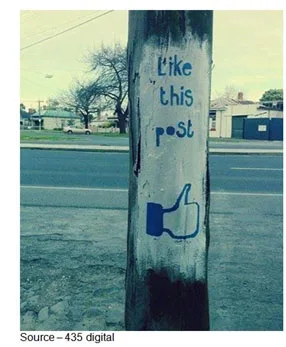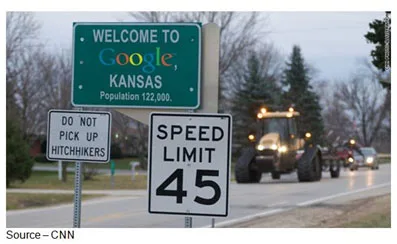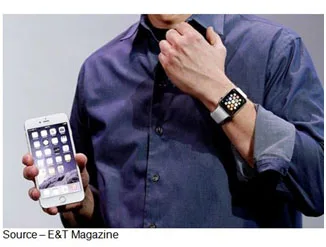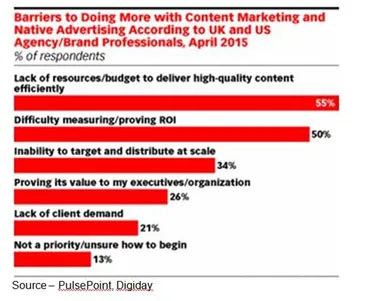Seen, Unseen – More Devices Just Means More, Not Better Ads

I admit it.
I love reading, watching, listening to ads.
I also love good editorial – educational, informative, interesting editorial.
That’s probably why I recently reread two books on David Ogilvy, often called the father of advertising – Confessions of an Advertising Man and Ogilvy on Advertising.
His ads have stood the test of time. He was a pioneer in information-rich, soft sell ads that didn’t insult the intelligence of his target audience.
He was even an early proponent – in a way – of what we have recently discovered as a hot, new, effective method of getting our messages across … native advertising.
He once said, “There is no need for advertisements to look like advertisements. If you make them look like editorial pages, you will attract about 50 per cent more readers.”
Today’s native advertising is proving to be a way for media – all media – to survive in the shifting mediascape.
There was a time when native ads were identified as advertorials. The label was smaller type than today’s free app user’s agreements but they were labeled.
Those days are gone though and clumsy, over-jargoned, hackneyed and even good ads appear everywhere.
Mitch Brenner observed, “Yes. I understand there are different varieties.”

Social media started the mad rush because when marketing types found that people were gathering there talking to each other, they figured what the heck we’ll throw ads at ‘em.
Actually, it was the lust for profits by social site investors that sold the dreams of millions of customers and billions in sales just ripe for the picking. You know, that same thirst for ad dollars that names stadiums, plasters logos on shirts, places products in TV shows/movies and places ads on anything that moves/doesn’t move.
Heck, if the price is right, entire towns will change their names!

Ask any publisher or editor of legacy media and they’ll tell you they’ve been severely challenged by digital technology as ad dollars and readers move from print/TV/radio to other information/entertainment outlets.
The web, mobile and soon wearables have pushed standard media to find new ways to connect with readers and, more importantly, generate revenue.
BAM!! Smart native advertising was new again.
Some folks like to say that native ads prosticize the editorial content but based on the folks I know, I agree with Ogilvy when it comes to truly professional journalists, “Does advertising corrupt editors? Yes it does, but fewer editors than you may suppose … the vast majority of editors are incorruptible.”
Wannabes I’m not too sure of.
For some reason, people get their knickers in a knot when you mention native advertising. But it has always been a good thing with us.
It’s all about gently branded but useful content – travel, beauty, car sections; cars/soda/beer in movies – that may or may not persuade viewers.
You know, stuff you see, read/view because it’s of interest to you.
BI Intelligence reported that native ads reached $7.9 billion in 2014 and will grow to $21 billion in 2018.

BI’s research reinforced Ogilvy’s observation that “A good advertisement is one which – sells the product without drawing attention to itself” when they found that:
- Social native ads will account for the biggest share of native ad revenue during this time period, but native-style display ads will grow the fastest
- Social-native, including Facebook News Feed ads and promoted tweets on Twitter, will draw a majority of native ad revenue between 2013 and 2018
- Native display ads, such as splashy native ads on Yahoo’s news pages and apps, will see the fastest ramp-up
- Sponsored content, such as some of the paid stories and sections on BuzzFeed and The New York Times (and Business Insider), has also attracted considerable attention
- Native ads perform better than traditional display – particularly on mobile and
- Consumers hold a generally positive attitude toward native advertising but advertisers and publishers must ensure that ads are relevant and are purchased by trustworthy brands to avoid the risk of any mainstream backlash
With our always-on, always-with-us devices, ad folks see new ways to engage with customers and wearables are their next chance to sell you something.
The combination of a screen (that can be tracked) always with you and super refined big data analytics means they can shoot you an ad the minute you look at something online or even walk past a store.
Creepy!
Don’t even worry about all of the government agencies tracking you because with a couple of billion smartphones in folks’ hands and IDC predicting that wearables will reach about 112M in 2018, marketers smell money.
Consoling them Mitch Brenner said, “You’re just a poor, innocent victim of circumstance.”
Peddlers of the on-the-go ad idea cite their research and tell us native ads are less disruptive and deliver better click rate numbers and it’s only going to get better.
But even back in the ‘60s Ogilvy thought that was so much B.S., “I notice increasing reluctance on the part of marketing executives to use judgment; they are coming to rely too much on research, and they use it as a drunkard uses a lamp post for support, rather than for illumination.”
Folks ignored him back then and not much has changed. According to the advocates, they’re developing better engagement and attention metrics so you’ll see more ads … everywhere.
Of course, a little thing like quality is still a work in progress.
Garbage is still garbage no matter where you see it or when you see it.
As Ogilvy pointed out, “What really decides consumers to buy or not to buy is the content of your advertising, not its form.”
Just expect to see a lot more ads chasing you.
 You and the mother in the diner will probably see all of the stuff appearing on all of your screens and scream, “I think you’re the cause of all of this. I think you’re evil. EVIL!”
You and the mother in the diner will probably see all of the stuff appearing on all of your screens and scream, “I think you’re the cause of all of this. I think you’re evil. EVIL!”
Just remember, it’s native and it’s tailored to you.
# # #

